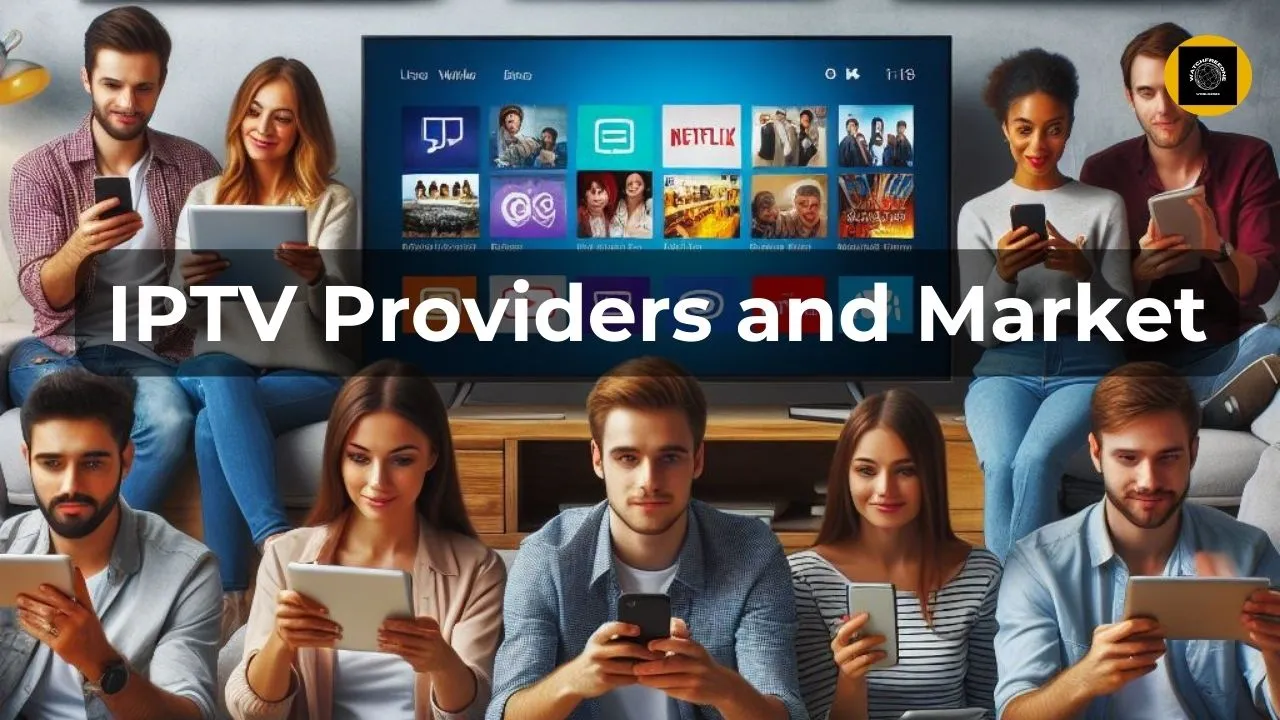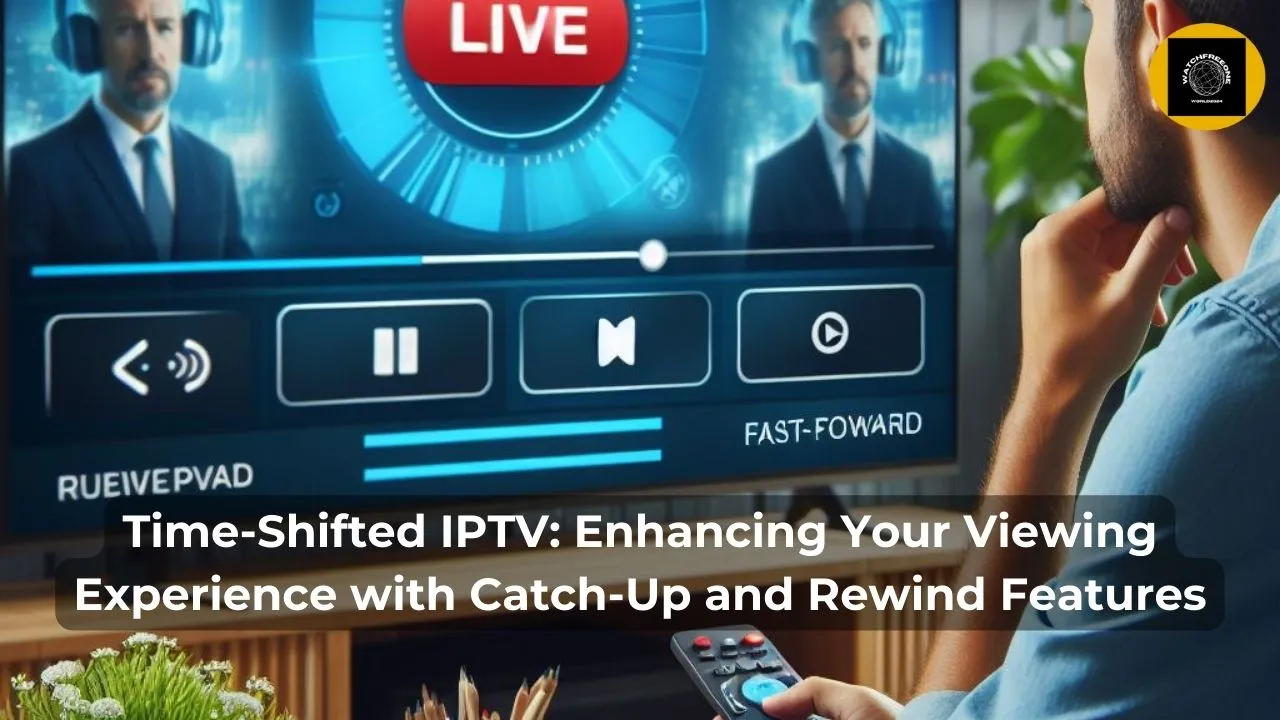Time-Shifted IPTV: Enhancing Your Viewing Experience with Catch-Up and Rewind Features
Time-shifted IPTV is a type of internet protocol television that offers users the ability to catch up on missed live TV shows. This innovative viewing experience allows users to watch their favorite shows at their convenience, without the need to adhere to traditional TV schedules. With VOD (video on demand) capabilities, users can access IPTV content whenever they want, enhancing their viewing experience.
IPTV works by using internet bandwidth to transmit TV signals to users, allowing them to watch their favorite shows on multiple devices. This type of TV format is scalable and offers interactivity, personalization, and fast-forwarding capabilities. Hybrid IPTV combines traditional TV with a streaming service, providing users with the best of both worlds. Many IPTV providers offer catch-up TV, allowing viewers to catch up on missed live broadcasts, and some even offer live IPTV, which allows users to fast-forward live TV and access pay-per-view content for a limited period.
Understanding IPTV
What Is IPTV?
IPTV stands for Internet Protocol Television, which is a digital television broadcasting protocol that uses the internet to deliver television content to viewers. It allows viewers to catch up on their favorite programs, watch live broadcasts, and even fast-forward live TV.
IPTV is different from traditional television in that it requires an internet connection to work. It is a way to deliver television content over IP networks, rather than through radio waves or satellite TV.
How Does IPTV Work?
IPTV requires a device that converts the digital signal into a format that can be displayed on a TV. This device is called a set-top box, and it is used to decode the signal and display it on the TV.
IPTV works by sending digital television content over IP networks in a process called multicasting. This allows multiple users to watch the same content at the same time, without using up too much bandwidth.
IPTV providers offer live TV, catch-up TV, and video on demand (VOD) services. Live TV allows viewers to watch programs as they are being broadcast, while catch-up TV allows viewers to watch programs that have already been broadcasted.
Types of IPTV Formats
There are different types of IPTV formats, including time-shifted IPTV, hybrid IPTV, and on-demand streaming. Time-shifted IPTV allows viewers to watch their favorite shows at a time that is convenient for them, while hybrid IPTV combines traditional TV with streaming services.
On-demand streaming allows viewers to watch content whenever they want, for a limited period of time. IPTV providers often offer a subscription fee for their services, which allows viewers to access a certain number of channels.
IPTV is a scalable and cost-effective way to deliver television content to viewers. It enhances the viewing experience by allowing users to watch their favorite programs on multiple devices, and it offers interactivity and personalization features.
Overall, IPTV is a growing market with a lot of potential for content providers and viewers alike. As the demand for high-quality and reliable IPTV services continues to grow, it is likely that we will see more innovative and user-friendly IPTV solutions in the future.
Time-Shifted IPTV Explained
The Concept of Time-Shifted Media
Time-shifted IPTV is a type of internet protocol television that allows users to watch their favorite shows at a time that is convenient for them. This is made possible through the use of catch-up TV, which allows viewers to catch up on missed episodes of their favorite programs. With time-shifted IPTV, subscribers can pause, rewind, and fast-forward live TV, giving them greater control over their viewing experience.
The concept of time-shifted media is not new, as it has been around for a while in the form of DVRs and video-on-demand services. However, time-shifted IPTV takes this concept to the next level by offering a more seamless and integrated viewing experience. This is because time-shifted IPTV is delivered over the internet, which allows for greater interactivity and personalization.
How Time-Shifted IPTV Enhances Viewing Experience
Time-shifted IPTV enhances the viewing experience in several ways. First, it allows viewers to watch their favorite shows at a time that is convenient for them, which means they never have to miss an episode. Second, time-shifted IPTV offers greater control over live TV, which means subscribers can fast-forward through commercials and rewind to catch something they missed.
In addition, time-shifted IPTV offers a more personalized viewing experience. This is because subscribers can choose which shows they want to watch and when they want to watch them. This is in contrast to traditional TV, where viewers are limited to the channels and programs offered by their cable or satellite provider.
Overall, time-shifted IPTV is a great way to enhance the viewing experience and give viewers greater control over their TV watching. With its ability to offer catch-up TV, fast-forward live TV, and greater interactivity, time-shifted IPTV is quickly becoming a popular choice for consumers looking for a more personalized and convenient way to consume television content.
IPTV Service Features
IPTV service providers offer a range of features that enhance the viewing experience of the users. These features allow users to watch their favorite shows at their convenience and personalize their viewing experience. In this section, we will discuss some of the key features of IPTV services.
Live TV and Time-Shift
IPTV services offer live TV channels that can be streamed over the internet. Users can watch their favorite programs in real-time, just like traditional TV. Additionally, IPTV services also offer time-shifted TV, which allows users to pause, rewind, and fast-forward live TV broadcasts. This feature is particularly useful for users who want to catch up on a program they missed or want to skip commercials.
Catch-Up and Video on Demand (VOD)
One of the most popular features of IPTV services is catch-up TV. This feature allows users to watch programs that have already been broadcasted for a limited period. Users can access catch-up TV through the IPTV service’s on-demand library. Additionally, IPTV services also offer video on demand (VOD), which allows users to watch programs at any time. VOD libraries usually include movies, TV shows, and other video content.
Personalization and Interactivity
IPTV services allow users to personalize their viewing experience. Users can create their own playlists, set reminders for upcoming programs, and receive recommendations based on their viewing history. Additionally, IPTV services offer interactivity features such as voting, commenting, and social media integration. These features allow users to engage with the content and other viewers.
In conclusion, IPTV services offer a range of features that enhance the viewing experience of the users. Live TV, time-shifted TV, catch-up TV, and VOD are some of the most popular features of IPTV services. Additionally, IPTV services allow users to personalize their viewing experience and engage with the content and other viewers.
Technical Aspects of IPTV
Network Infrastructure and Bandwidth
IPTV requires a reliable and robust network infrastructure to ensure high-quality and uninterrupted viewing experience. The network infrastructure must be able to handle the bandwidth requirements of IPTV traffic, which can vary depending on the quality of the video and the number of users accessing the same content simultaneously.
To ensure smooth streaming, IPTV providers often use Content Delivery Networks (CDNs) to distribute the content across multiple servers located in different regions. This helps to reduce the load on any single server and ensures faster delivery of the content to the end-user.
The bandwidth requirements for IPTV can vary depending on the type of IPTV service being offered. For example, live IPTV requires higher bandwidth compared to on-demand streaming. IPTV providers must ensure that they have sufficient bandwidth to handle the traffic and prevent buffering or interruptions during playback.
Compatibility and Multicasting
IPTV is compatible with a wide range of devices, including smart TVs, smartphones, tablets, and computers. IPTV providers must ensure that their service is compatible with as many devices as possible to reach a wider audience.
Multicasting is a technique used by IPTV providers to deliver content to multiple users simultaneously without the need for individual streams. This helps to reduce the bandwidth requirements and ensures smoother playback. However, not all network infrastructures support multicasting, which can limit the reach of IPTV services.
To ensure compatibility and multicasting, IPTV providers often use standardized protocols such as HTTP Live Streaming (HLS) and Real-Time Messaging Protocol (RTMP). These protocols help to ensure that the content is delivered in a format that is compatible with most devices and can be easily streamed over the internet.
In summary, IPTV requires a robust network infrastructure and sufficient bandwidth to ensure high-quality viewing experience. IPTV providers must also ensure compatibility with a wide range of devices and use standardized protocols to enable multicasting and smooth streaming.
User Experience with IPTV
Convenience of Watching Favorite Shows
One of the main advantages of IPTV is the convenience it provides to users. With IPTV, users can watch their favorite shows whenever they want, without having to worry about missing an episode. This is because IPTV providers offer catch-up and time-shift TV, which allows users to watch shows that have already been broadcasted.
Moreover, IPTV also allows users to fast-forward or rewind live TV, which is not possible with traditional TV. This feature is particularly useful for viewers who want to skip commercials or re-watch a specific scene. Additionally, IPTV providers offer video on demand (VOD) services, which enable users to watch programs at their own pace.
Quality and Reliability
Another important aspect of user experience with IPTV is the quality and reliability of the service. IPTV content is delivered over the internet, which means that it requires a stable and high-speed internet connection. Therefore, users need to have sufficient bandwidth to ensure that their viewing experience is smooth and uninterrupted.
Furthermore, IPTV providers need to ensure that their service is scalable and can handle a large number of users simultaneously. This is particularly important during live broadcasts, where a large number of viewers may be trying to watch the same program at the same time.
Overall, IPTV offers a viewing experience that is both convenient and flexible. With features like catch-up TV, time-shift TV, and VOD, users can enjoy their favorite programs at their own pace. Additionally, IPTV providers need to ensure that their service is of high quality and reliability, to ensure that users can enjoy their viewing experience without any interruptions or technical issues.
IPTV Providers and Market

Choosing an IPTV Provider
When it comes to choosing an IPTV provider, there are a few factors to consider. Firstly, users must ensure that the provider offers the type of IPTV they are looking for, whether it be live TV, catch-up TV, or time-shifted TV. It is also important to check the compatibility of the provider with the user’s device, as well as the quality and reliability of the service.
Another important consideration is the provider’s interactivity and personalization features, such as the ability to fast-forward live TV or watch programs on multiple devices. Users should also be wary of providers that offer free or unauthorized access to IPTV content, as this may be illegal and potentially harmful to their privacy.
Global IPTV Market Trends

The global IPTV market has seen significant growth in recent years, with a compound annual growth rate (CAGR) of 14.2% from 2019 to 2025. This growth can be attributed to the increasing demand for internet-based television content, as well as the scalability and cost-effectiveness of IPTV compared to traditional TV.
The market is dominated by a few key players, including AT&T, Verizon, and Comcast, who offer a range of IPTV services to their subscribers. However, there is also a growing number of smaller IPTV providers who offer niche services and cater to specific audiences.
Overall, the IPTV market is expected to continue its growth trajectory in the coming years, driven by advancements in network infrastructure and the increasing availability of IPTV content. As such, it is important for users to carefully consider their options and choose a provider that offers the features and content they require.
Security and Privacy in IPTV
As with any internet-based service, security and privacy are important concerns for IPTV providers and users. IPTV providers must take measures to prevent unauthorized access to their networks and ensure the privacy of their subscribers.
Preventing Unauthorized Access
Unauthorized access to IPTV networks can lead to content piracy and loss of revenue for content providers and IPTV providers. To prevent unauthorized access, IPTV providers use various security measures such as encryption, digital rights management (DRM), and access control.
Encryption is used to protect IPTV content from being intercepted and viewed by unauthorized users. DRM is used to control the use and distribution of IPTV content and ensure that only authorized users can access it. Access control is used to restrict access to IPTV networks and content to authorized users only.
Understanding Privacy Policies
Privacy policies are important for IPTV providers to ensure the privacy of their subscribers. IPTV providers must clearly state their privacy policies and inform their subscribers about the types of data they collect, how they use it, and who they share it with.
Subscribers must also be given the option to opt-out of data collection and sharing. IPTV providers must also ensure that their data collection and sharing practices comply with applicable laws and regulations.
In conclusion, IPTV providers must take measures to prevent unauthorized access to their networks and ensure the privacy of their subscribers. Subscribers must also be informed about the privacy policies of IPTV providers and given the option to opt-out of data collection and sharing.
Frequently Asked Questions
How does time-shifted IPTV enhance the viewing experience for users?
Time-shifted IPTV allows users to watch their favorite shows at their convenience by providing catch-up and time-shift TV features. This means that viewers can pause, rewind, and fast-forward live TV broadcasts, giving them greater control over their viewing experience. Time-shifted IPTV also offers on-demand streaming, enabling users to consume television content at their own pace.
What are the key differences between traditional TV and IPTV?
Traditional TV broadcasts use radio waves to transmit signals to a limited number of channels, whereas IPTV uses internet-based IP networks to deliver content to multiple devices. IPTV also allows for interactivity, personalization, and scalability, providing a more flexible and customizable viewing experience for users.
How does catch-up TV work within an IPTV service?
Catch-up TV allows viewers to catch up on programs that have already been broadcasted, usually within a certain limited period. IPTV providers offer catch-up TV as part of their service, allowing users to watch programs they may have missed or want to watch again. Catch-up TV is made possible by storing previously broadcasted content on servers, which can be accessed by users at their convenience.
What should consumers look for in an IPTV provider that offers VOD and time-shift features?
Consumers should look for an IPTV provider that offers a wide range of VOD and time-shift features, including fast-forwarding live TV, on-demand streaming, and catch-up TV. Providers should also offer high-quality and reliable service, with good compatibility across multiple devices. Consumers should also ensure that the provider they choose offers adequate security measures to protect against unauthorized access.
In what ways can IPTV content personalization improve the user experience?
IPTV content personalization allows users to tailor their viewing experience to their preferences, providing a more engaging and enjoyable experience. Personalization features allow users to create playlists, set reminders, and receive recommendations based on their viewing history. This can improve the user experience by making it easier to find and enjoy their favorite programs.
What are the potential risks of unauthorized access to IPTV services and how can they be mitigated?
Unauthorized access to IPTV services can pose a significant risk to both content providers and end-users. This can include unauthorized access to sensitive information, as well as the theft of intellectual property. To mitigate these risks, IPTV providers should implement robust security measures, including encryption and authentication protocols. End-users should also take steps to protect their devices and networks from unauthorized access, such as using strong passwords and keeping software up to date.
HurryTimer: Invalid campaign ID.